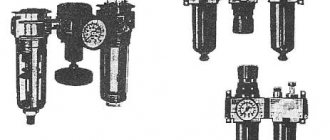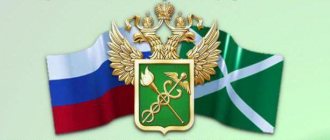State registration of the RosTestStandard certification system in the Federal Agency ROSSTANDART registration number ROSS RU.Z1527.04IZhRO
ROSTESTSTANDARD
Certification of products in the RosTestStandard center is carried out for compliance with technical regulations and established State safety and quality standards, we advise who issues, where and how to obtain, issue: a certificate of conformity, declarations of conformity, a certificate of state registration of products and a fire safety certificate. We determine exactly which of the above-mentioned permits is required to be issued according to the list of products subject to mandatory certification in the territory of the Customs Union (EAEU) or declaration of conformity.
STATE CERTIFICATION: 8 (800) 200-87-81 FREE CALL
| • Home | • Services | • Certificate of conformity | • Declaration of conformity | • To the manufacturer | • To the importer | • Technical regulations | • Commodity Nomenclature of Foreign Economic Activity of the EAEU | • Contacts |
Central heating boilers, except boilers of heading 8402:
Manufacturers from Russia
| Factory | Product example |
| Limited Liability Company Experimental Plant VNIIETO | Electric water heating boilers EOV-1.25; EOV-2; EOV-4/2; EOV-6/3; EOV-9/4.5; EOV-15/9/6; EOV-18/9. |
| Limited Liability Company Resurs-ElectroTerm | Electric boilers EVPM |
| Limited Liability Company Scientific and Production Enterprise Teplotekhnika | Electric heating boilers EKT with rated power from 1.6 to 750 kW |
| Limited Liability Company NPC Krasnoye Znamya Plant | Electric boilers |
| Limited Liability Company "Pyramid Plus" | Electrothermal industrial equipment: electric boilers |
| Limited Liability Company "Novosibirsk Metalworking Company" | Electric water heaters (electric boilers) of the Siberia brand, rated power consumption 3 kW, 6 kW, |
| Limited Liability Company Trading House ElectroMash | Electrical appliances and household appliances: electric heating boilers “ElectroMash” of the EVP series. |
If you need exporters Exporters: suppliers and manufacturers - exportv.ru
Communication with the supplier, agreement on prices and delivery conditions: 2 000
rubles
Order Delivery
Examples of declaring the Commodity Nomenclature of Foreign Economic Activity of the EAEU, definition of the Commodity Nomenclature of Foreign Economic Activity code
Search the list of goods that have undergone customs clearance (more than 700,000 examples of declaration).
To obtain more detailed and up-to-date information, including real prices, use the “Average Contract Prices” information module and the “Tamplat PRO+” customs calculator.
Declaration examples on the website are for informational purposes only and cannot serve as a basis for making a decision on the classification of goods.
- 8419899890 — HEATING BOILERS OPERATING WITH LIQUID FUEL: "" ELICOIL OIL BOILER OPERATING WITH HIGH TEMPERATURE ORGANIC HEATING FLUIDS (ON DIATERMIC
- 8516797000 — ELECTRODE WATER HEATING BOILERS GALAN MODELS: OCHAG-6, NOMINAL POWER CONSUMPTION 6 KW, VOLTAGE — 220 V. FOR INDOOR HEATING
- 8403101000 – GAS HEATING BOILERS MADE FROM HIGH-QUALITY BOILER CAST IRON WITH CAST IRON HEAT EXCHANGER WITH BUILT-IN GAS BURNER, COMBUSTION CHAMBER, CIRCUS
Mobile version Advertising on the website Advertising on the website Forms CMR, ТН, ТТН Information
- Update date: 03/18/2020
- Total entries: 635410
- Found: 23
- Shown: 21 – 23
TKS SOFT LLC software for customs clearance. Programs for declarants and other participants in foreign trade activities
Training license No. 1458 dated July 30, 2015
Contact the TKS software support department: request a call back
Contract for the supply of electric boilers
In a foreign trade contract it is advisable to indicate:
- Unified contract number
- Contract signing date
- Place where the contract is signed.
- Full official names of the organizations of the Seller and the Buyer.
- Country of the foreign partner and country of destination (departure) of the goods.
- Subject of contract.
- Container/packaging/labeling of goods.
- Volume/weight and quantity of goods.
- Price and amount.
- Conditions of payment.
- Names and addresses of banks / parties / account numbers / payment details.
- Delivery time.
- Conditions for acceptance of goods in terms of quality and quantity.
- Force Majeure. Force majeure circumstances are formulated.
- Dispute resolution.
- Sanctions.
- Addresses of the Buyer and Seller.
- Signatures of the parties.
Our legal department will prepare an agreement (contract) for you, which will protect you not only before the supplier, but also before customs.
The delivery basis is indicated in accordance with Incoterms 2010 (International Rules for the Interpretation of Trade Terms)
Supply contract cost: 2 000
rubles
Order a contract
HS code for electric boilers
We have selected the appropriate codes for importing electric boilers into Russia. A correctly selected code will allow you to reduce payments.
- 8403109000 - OTHER CENTRAL HEATING BOILERS, EXCEPT BOILERS OF COMMODITY ITEM 8402
- 8537 - Consoles, panels, consoles, tables, switchboards and other bases for electrical apparatus, equipped with two or more devices of heading 8535 or 8536, for the control or distribution of electric current, including those incorporating devices or devices of group 90 and digital control devices, except switching devices of heading 8517:
- 8516101100 — ELECTRIC FLOWING WATER HEATERS
- 8516299900 – OTHER ELECTRICAL APPLIANCES FOR SPACE HEATING AND GROUND HEATING
Our specialists will select based on technical characteristics and reduce payments (the duty is reduced from 15% to 0% of the delivery cost). Attention, if the HS code is incorrectly selected, your cargo may be detained at customs and a fine may be issued.
HS codes
9032 - Instruments and devices for automatic regulation or control:
| 9032 | Instruments and devices for automatic regulation or control: |
| 9032 10 | — thermostats: |
| 9032 10 200 0 | - - electronic |
| - - other: | |
| 9032 10 810 0 | — — — with electric starting device: |
| 9032 10 890 0 | - - - others |
| 9032 20 000 0 | — manostats: |
| — other instruments and devices: | |
| 9032 81 000 | - - hydraulic or pneumatic: |
| 9032 81 000 1 | — — — for civil aviation |
| 9032 81 000 9 | - - - others |
| 9032 89 000 | - - other: |
| 9032 89 000 1 | — — — for the production of aircraft engines |
| 9032 89 000 9 | - - - others |
| 9032 90 000 | - parts and accessories: |
| 9032 90 000 1 | — — for industrial assembly of motor vehicles of headings 8701-8705, their components and assemblies |
| 9032 90 000 9 | - - others |
Subject to Note 7 to this Chapter, this heading covers:
(A) Instruments and apparatus for the automatic control of the flow, level, pressure and other variables of liquids or gases or for the automatic regulation of temperature, whether or not dependent on their operation from an electrical phenomenon that varies depending on the factor subject to automatic regulation; which are designed to bring this factor to the desired value and maintain it at this level, stabilizing it from disturbing influences, by continuous or periodic measurement of its actual value.
(B) Automatic regulators of electrical quantities and instruments and apparatus for automatic regulation of non-electrical quantities, the operation of which depends on an electrical phenomenon that varies depending on the controlled factor. which are designed to bring this factor to the desired value and maintain it at this level, stabilizing it from disturbing influences, by continuous or periodic measurement of its actual value.
(I) Instruments and apparatus for automatic flow control,
level, pressure and other variables of liquids and gases
and for automatic temperature control
Automatic control devices for liquids and gases and automatic temperature control devices form part of complete automatic control systems and consist essentially of the following devices:
(A) Devices for measuring the controlled variable (pressure or level in the tank, room temperature, etc.); in some cases a simple device that is sensitive to changes in a variable (a metal or bimetallic rod, a chamber or bellows containing an expanding liquid, a float, etc.) can be used instead of a measuring device.
(B) A control device that compares the measured quantity with the desired value and activates the device described in paragraph (C) below.
(B) Starting, stopping or operating device
An apparatus for the automatic control of liquids, gases or temperature within the meaning of Note 7(a) to this Chapter consists of these three devices forming a single unit or, in accordance with Note 3 to this Chapter, a functional unit.
Some instruments and apparatus do not contain devices that compare the measured value with the desired value. They are directly switched on by a switch, for example when a preset value is reached. which are designed to bring this factor to the desired value and maintain it at this level, stabilizing it from disturbing influences, by continuous or periodic measurement of its actual value.
Instruments and apparatus for automatically regulating flow, level, pressure and other variable liquids and gases or for automatically regulating temperature are connected to a device that carries out orders (pump, compressor, valve, furnace burner, etc.), restoring the prescribed value of the variable ( for example, a liquid measured in a tank, or a temperature measured in a room) or, in the case of a safety system, stops, for example, the operation of a machine or apparatus that is being regulated. This accessory, usually remotely controlled by a mechanical, hydraulic, pneumatic or electrical control, is to be classified in its own appropriate heading (pump or compressor: heading 84.13 or 84.14; valve: heading 84.81, etc.). If automatic control apparatus is combined with a device that carries out commands, the classification of the whole must be determined by basic rule of interpretation 1 or basic rule of interpretation 3(b) (see Part (III) of the General Explanatory Note to Section XVI and the Explanatory Note to heading 8481).
This set of goods includes:
(A) Pressure regulators or controllers, also called manostats. They consist essentially of a pressure-sensing device, a control device that compares (for example, by means of an adjustable spring) the regulated pressure with a prescribed value, and an electrical contact or small valve that causes the auxiliary circuit to operate.
This apparatus may be used, for example, to control a motor pump or compressor that supplies power to a pressure vessel, or to control the operation of pneumatic valve positioners or with a valve to regulate the flow, pressure, etc. of liquids and gases.
These pressure regulators are distinguished from the pressure-reducing valves of heading 8481 (sometimes also called “pressure regulators”).
(B) Level regulators or controllers for automatic level control.
In a float-type level controller, a float acts on a membrane or magnetic or other device that causes an electrical switch to operate; it, in turn, turns the pump, valve, etc. on or off.
In an electrode system, a liquid is connected to ground and forms part of a circuit. One pole of the transformer is also grounded. When the surface of the liquid comes into contact with the electrode, the circuits are closed and the relay is activated.
(B) Humidity regulators, sometimes also called “humidistats,” are devices for automatically regulating humidity in steam ovens, ovens, workshops, warehouses, etc.
Their operation depends on changes in the length of a tuft of hair or some other element sensitive to humidity, and usually they activate an alarm device or control an apparatus that can change the degree of humidity (steam valve, humidifier or dehumidifier, fan, etc.) .
(D) Thermostats are used to automatically regulate temperature. The main components of the thermostat are:
(1) A temperature sensitive element whose operation may be affected by the following:
(a) Changes in the shape of the bimetallic strip (straight, U-shaped or spiral, etc.);
(b) Vapor pressure of the liquid;
(c) Expansion of liquid or metal rod;
(d) Electrical resistor or thermocouple.
In thermostats with a bimetallic strip, the strip is installed inside the plunger tube or in the housing. In thermostats with a metal rod, the rod is installed in a plunger tube. In vapor pressure thermostats or liquid thermostats, the sensing element may consist of a folded membrane containing the liquid, or a system containing the membrane, a capillary tube and a bulb or elbow.
(2) A drum, disk, or other device for presetting the desired temperature.
(3) An actuating or actuating device which consists primarily, depending on the type of transmission used (mechanical, electrical or fluid driven), of a system of levers, springs, etc., a valve or an electrical switch. This device includes a signal or device (usually remote) such as a steam or hot water valve, boiler burner, air conditioner, fan, etc. that regulates the temperature.
Thermostats are used, among other things, to regulate temperature in homes and other buildings, in furnaces, ranges, boilers, water heaters, cold storage units, chimneys and flues, steam apparatus and cabinets, and other industrial or laboratory equipment.
(E) Temperature controllers for setting and maintaining set temperatures in electric heating devices (stoves, grills, filter machines, etc.) consist essentially of a bimetallic strip, which, bending from the heat from a shunt resistor in the power circuit, causes the switch to operate, by making or breaking the power circuit, the “on” and “off” periods (and therefore the temperature of the heating elements) are determined by the position of the manual control dial; the "full" position makes the bimetallic unit inactive, and thus, especially in the initial stages of heating, allows the heating element to operate continuously.
The following are excluded from this heading:
(a) “Thermostatic” or “thermostatic” evaporators, cabinets, etc., in which the temperature is maintained constant by a thermostat; they must be classified in their respective headings.
(b) Thermostatic adjustable valves (heading 84.81).
(E) Furnace air draft controls are used, for example, in central heating or air conditioning installations to automatically regulate air supply based on temperature, pressure, etc.
(II) Automatic regulators of electrical quantities and instruments and apparatus for automatic regulation of non-electrical quantities, the operation of which depends on electrical phenomena,
varying depending on the controlled factor
Automatic regulators of this heading are intended for use in complete automatic control systems which are intended to bring any quantity, electrical or non-electrical, to a given value and maintain it, stabilize it against any disturbance by continuous measurement of the actual value. They consist essentially of the following devices:
(A) A measuring device (sensor, transducer, resistance probe, thermocouple, etc.) that determines the actual value of the controlled variable and converts it into a proportional electrical signal.
(B) An electrical control device that compares the measured quantity with the desired value and produces a signal (usually in the form of a modulated current).
(B) A starting, stopping, or tripping device (usually contacts, switches or circuit breakers, reversing switches, and sometimes relay switches) that supplies current to the starter in accordance with a signal received from the control device.
An automatic regulator within the meaning of Note 6(b) to this Chapter consists of the devices described in (A), (B) and (C) above, assembled together into a single unit or, in accordance with Note 3 to this Chapter, into a functional node
If they do not satisfy the definitions given above, these devices should be classified as follows:
(1) Electrical measuring devices are generally classified in headings 9025, 9026 or 9030.
(2) Electrical control devices are to be classified in this heading as partial and automatic control devices.
(3) Making, stopping and actuating devices are to be classified generally in heading 8536 (switches, relays, etc.).
Automatic controllers are connected to an electrical, pneumatic or hydraulic actuator that returns the controlled variable to the desired value. This actuator could be a detent that controls the gap between the arc furnace electrodes, a motorized valve that controls the flow of water or steam to the boiler, furnace, pulping machine, etc.
Actuators are to be classified in their own appropriate headings (adjustable detent: heading 8425; motorized or solenoid valve: heading 8481; solenoid positioner: heading 8505; etc.). If an automatic regulator is combined with an actuator, the classification of the whole must be determined either by fundamental rule of interpretation 1 or by fundamental rule of interpretation 3(b) (see Part (III) of the general provisions of the Explanatory Note to Section XVI and the Explanatory Note to heading 8481).
Electronic regulators operate on a strictly electrical principle rather than electromechanically. Their characteristic feature is semiconductors (transistors) or integrated circuits.
These controllers are used not only for electrical quantities such as voltage, current, frequency and power, but also for other quantities such as RPM, torque, traction, level, pressure, flow or temperature.
This heading does not include:
(a) Switches combined in one housing with a voltage regulator or current regulator and intended for use in connection with piston internal combustion engines are classified in heading 85.11.
(b) "Programmable controllers" of heading 8537.
Parts and Accessories
Subject to the provisions of Notes 1 and 2 to this chapter (see general explanatory provisions), parts and accessories of apparatus and accessories of this heading are also classified in this heading.
Customs payments for electric boilers
- import customs duty on electric boilers from 12/01/2021
- value added tax
- excise tax
- customs duties
| Code options for electric boilers | VAT | Promotion | Import duty |
| 8403109000 | 20% | is not a subject to a tax | 10 % |
| 8537 | |||
| 8516101100 | 20% | is not a subject to a tax | 10 % |
| 8516299900 | 20% | is not a subject to a tax | 9 % |
When importing electric boilers, this is calculated based on the assigned HS code.
If you cannot select the code yourself or are importing through another customs broker, then the cost of selection is: 1 000
rubles When working with us, selecting a code is free!
Order


